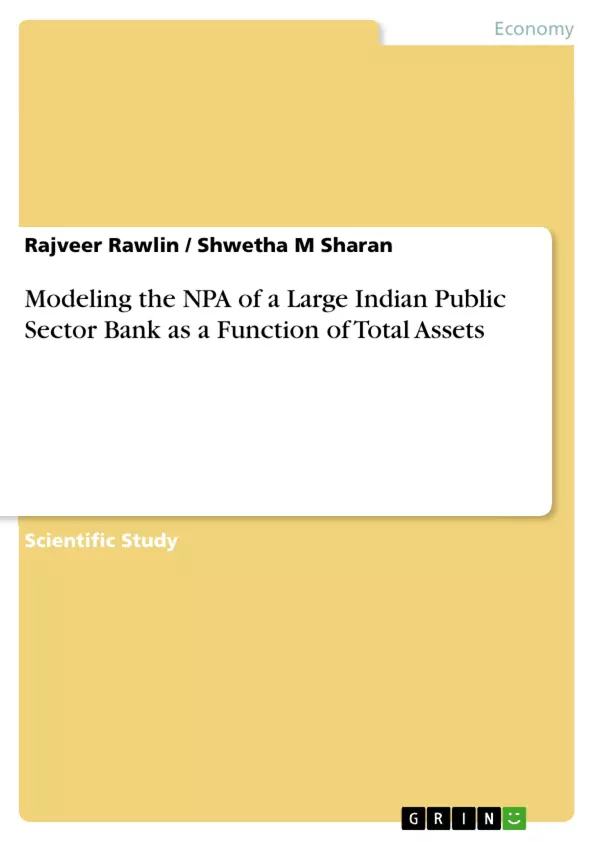Non-performing assets (NPA) are the loans given by a bank or a financial institution where in the borrower defaults or delays interest and / principal payment. The management of NPAs therefore, is a very important part of credit management of banks and financial institutions in the Country. Currently NPA estimates in India are predominantly obtained from figures published by the Reserve Bank of India (RBI). However it would be helpful for banks and financial institutions to have an estimate of the NPA as soon as loan amounts are disbursed. This study attempted to develop a predictive model for the NPA% at both the gross and net level from the total assets of one of India’s largest public banks. A strong correlation was observed between gross and net NPA% and the total assets suggesting that estimates of gross and net NPA can be made from total assets. Linear and non linear models were fit to predict the NPA% from the total assets. A non linear model linking both Gross and net NPA to total assets provided the best curve fit and the least deviation from actual values. Thus by simply looking at the banks total assets an overall picture of the banks NPA level can be ascertained.
Inhaltsverzeichnis (Table of Contents)
- Introduction
- Literature Review
- Methodology
- Results and Discussion
- Conclusion
Zielsetzung und Themenschwerpunkte (Objectives and Key Themes)
This study examines the relationship between the non-performing assets (NPA) of a large Indian public sector bank and the bank's total assets. The objective is to develop a predictive model for NPA% based on total assets, aiding in the early estimation of potential NPAs. This research explores the correlation between gross and net NPA% and total assets, seeking to establish a practical method for estimating NPA levels.
- NPA management in the Indian banking sector
- Predictive modeling of NPA% using total assets
- Relationship between gross and net NPA% and total assets
- Linear and non-linear model development for NPA prediction
- Impact of total assets on asset quality and bank performance
Zusammenfassung der Kapitel (Chapter Summaries)
The study begins with an introduction that highlights the significance of NPA management in the Indian banking sector. The literature review delves into research on the determinants of NPA, examining studies on the impact of macroeconomic conditions, credit growth, and bank-specific factors on NPA formation. The methodology section describes the data collection process, including the use of historical data from the Reserve Bank of India and Capitaline financial databases. The results and discussion section analyzes the relationship between total assets and NPA%, comparing linear and non-linear models to assess the predictive power of total assets in estimating NPA levels. The final section concludes the study, summarizing the key findings and highlighting the implications of the results for bank management and policymakers.
Schlüsselwörter (Keywords)
This study focuses on the following keywords: NPA Management, Total Assets, Indian Public Bank, Gross NPA, Net NPA, Linear Model, Non-Linear Models.
- Citar trabajo
- Rajveer Rawlin (Autor), Shwetha M Sharan (Autor), 2011, Modeling the NPA of a Large Indian Public Sector Bank as a Function of Total Assets, Múnich, GRIN Verlag, https://www.grin.com/document/183722



